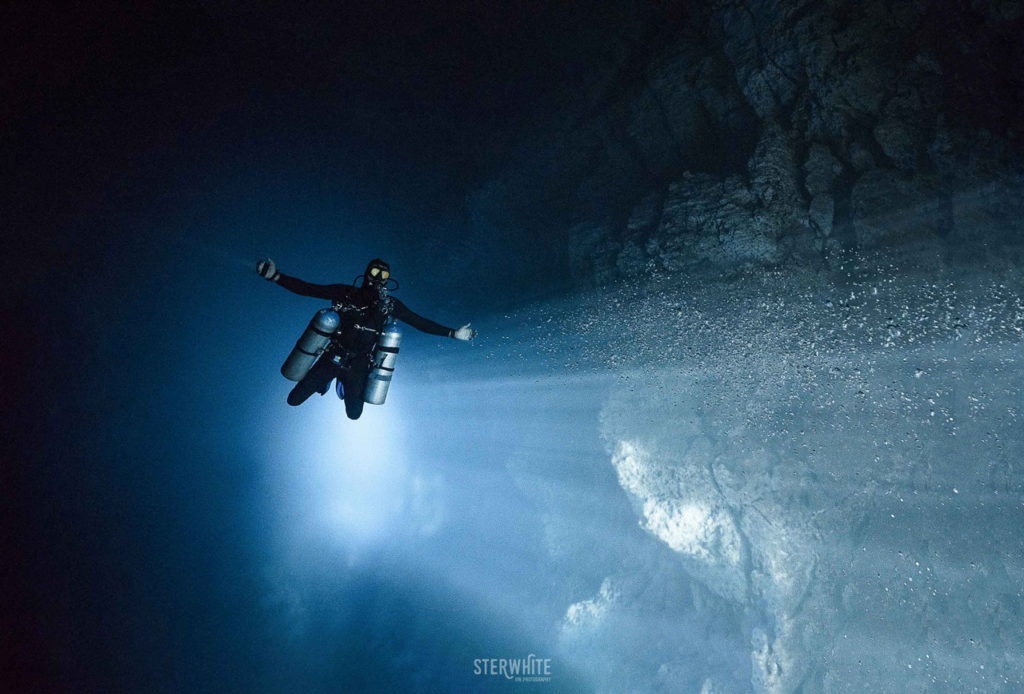Underwater photography in the cenotes of Mexico can be a breathtaking and unique experience. Cenotes are natural sinkholes filled with water, often featuring stunning rock formations, crystal-clear water, and diverse aquatic life. Here are some highlights and tips for underwater photography while Scuba Diving in these beautiful locations:
Highlights of Cenote Underwater Photography
Cenotes provide a variety of environments, from open water to caves and tunnels, allowing for diverse photographic opportunities.

Crystal-Clear Water: The transparency of cenote water can be exceptional, making it ideal for capturing sharp images of underwater scenes.
Stunning Light Effects: The interplay of sunlight filtering through water and rock formations creates beautiful patterns and dramatic lighting. Early morning or late afternoon can offer particularly magical light.
Diverse Ecosystems: Cenotes are home to unique aquatic life, including fish, algae, and sometimes even turtles. This biodiversity can add interesting elements to your photographs.
Historic and Cultural Significance: Many cenotes have deep cultural significance to the Maya civilization, with some featuring ancient artifacts or remnants, providing a historical context to your photography.
Tips for Underwater Photography in Cenotes
Choose the Right Equipment: A good underwater camera setup is essential. This might include a waterproof housing for your camera, a wide-angle lens for capturing expansive scenes, and an external strobe or light for illuminating subjects.
Plan Your Shots: Scout the area beforehand if possible, and think carefully about composition. Look for interesting angles or rock formations that can frame your subjects.
Watch Your Buoyancy: Stay aware of your buoyancy to avoid disturbing sediment or stirring up debris, which can cloud the water and affect your images. As a Scuba Instructor, I can teach or help you to improve it, due with the PADI Peak Performance Buoyancy specialty plus my own personal tips.
Use Natural Light: Take advantage of natural light, especially when it’s coming from the right angle. Experiment with backlighting to capture stunning silhouettes.
Focus on the Foreground: Incorporate foreground elements, like rocks or plants, to create depth in your images.
Practice Proper Technique: Maintain a stable position and use a slow shutter speed to capture movement and life in the water. I recommend no slower than 125 fps and open your aperture for low light conditions. Practice your breathing to avoid movement disturbances.
Observe Wildlife: Be patient and respect the underwater life. Take your time to observe and wait for the right moment to capture a shot without disturbing the ecosystem.
Post-Processing: Edit your photos to enhance colors and contrast, but strive to maintain a natural look that reflects the beauty of the cenotes. If you need help with this, just contact me for a master class!
Popular Cenotes for Photography and my favorite ones
Cenote The Pit : One of the most famous cenotes, Cenote the Pit is a famous, multi-level diving site in the Dos Ojos Natural Park located betwen Playa del Carmen and Tulúm. Known for its unique landscapes, crystal clear water, sunbeams and hydrogen sulfide cloud.
Cenote Nicte-ha: A beautiful and hidden gem in the mayan jungle near Dos Ojos Cenote in Tulum, México. The atmosphere at Cenote Nicte-Ha is really nice, decorated with lili´s flowers, this place is so peaceful, serene and less popular, so, more confortable to scuba diving with underwater cameras.
Cenote Dos Ojos: A popular spot for diving and snorkeling, known for its stunning underwater passages and crystal-clear water.
Cenote Maravilla: Is an almost classically-shaped example of the sinkholes you will find on the Yucatan Peninsula. It is very, very deep – going down to a depth of around 70 meters or more – with a profile something like a giant glass jar, with a narrower open lid at the top and a broader base.
Cenote Angelita: A surreal green landscape with an island and trees protruding from the cloud, and large stalactites near the surface. A unique dive site with a white cloud of hydrogen sulfide gas that hangs in the water. The cloud is 3 meters thick and sits on a halocline, which means visibility is reduced to less than half a meter.
Would you like to dive in these incredible places?
As a Professional Underwater Photographer and Scuba instructor with many years of experience, and living in the Yucatán Península for the last 8, I know the best cenotes, timing and tips about scuba diving and photography here. Contact me here to organize your diving adventure with a private photo shoot or master class!


